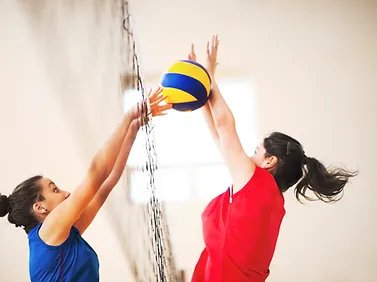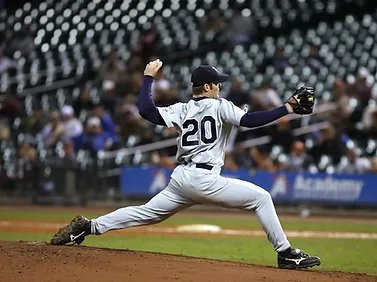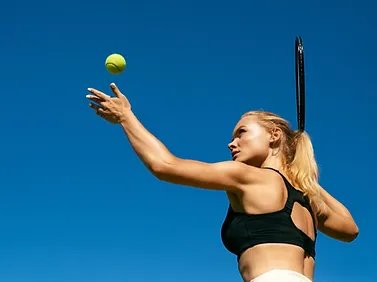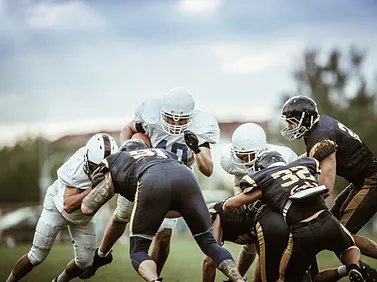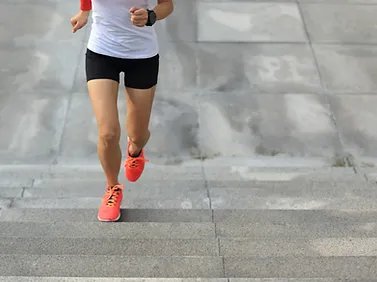INJURY GUIDE
Understanding the problem is the first step on the road to recovery. Use this guide to learn more about common injuries, and some simple exercises that can help! If you have more than mild pain while performing them, stop and seek out help from a medical professional. For educational purposes only. Read our Medical Information Disclaimer.
Achilles Tendinopathy
“The Achilles tendon, the largest and strongest tendon in the human body, plays a crucial role in transmitting the force generated by the calf muscles to the heel bone during movement.”
Hallux Valgus (Bunions)
“Over time, the joint becomes misaligned, causing the 1st metatarsal to deviate outward. This misalignment leads to structural changes and the formation of a bony bump at the base of the big toe.”
Metatarsalgia & Morton’s Neuroma
“The metatarsals, a group of long bones in the midfoot, connect the toes to the tarsal bones of the rearfoot. They play a crucial role in weight-bearing and propulsion during walking, running, and jumping.”
Plantar Fasciopathy
“The plantar fascia is a thick band of fibrous tissue that spans the bottom surface of the foot, connecting the heel bone (calcaneus) to the base of the toes.”
Posterior Tibialis Tendinopathy
“The posterior tibialis tendon originates from the back of the calf, specifically the posterior tibialis muscle, and travels down the inside of the ankle to attach to multiple bones in the foot.”
Shin Splints
“The muscles responsible for foot and ankle movement, such as the posterior tibialis, soleus, and flexor digitorum longus, attach to the inner aspect of the tibia.”
Iliotibial (IT) Band Syndrome
“The ITB is a thick band of fibrous tissue that runs along the outside of the thigh, extending from the hip to the knee.”
ACL Tears & Sprains
“The ACL is one of the primary ligaments connecting the thighbone (femur) to the shinbone (tibia).”
Meniscus injuries
“The meniscus is a C-shaped cartilage structure located in the knee joint between the femur (thighbone) and tibia (shinbone).”
Patellar Tendinopathy
“The patellar tendon, also known as the patellar ligament, is a strong fibrous structure that connects the patella (kneecap) to the tibia (shinbone).”
Patellofemoral Syndrome
“The patella acts as a fulcrum, facilitating the transmission of forces from the quadriceps muscles to the lower leg during movements such as running, jumping, and squatting.”
Hip Bursitis
“The trochanteric bursa acts as a cushion between the greater trochanter and the iliotibial band (a thick band of connective tissue running along the outside of the thigh) as well as the gluteal muscles.”
Hip Labral Disorders
“Surrounding the rim of the acetabulum is the labrum, a ring of cartilage that provides stability and cushioning to the hip joint.”
Piriformis Syndrome
“The piriformis is a deep muscle. It originates from the sacrum, the triangular bone at the base of the spine, and extends across to the outer surface of the hip joint, attaching to the top of the femur (thighbone), specifically, the greater trochanter.”
AC Joint injuries
“The Acromioclavicular joint is formed by the articulation of the acromion, a bony process of the scapula (shoulder blade), and the lateral end of the clavicle (collarbone). This joint plays a crucial role in facilitating the movement and stability of the shoulder complex.”
Frozen shoulder
“Adhesive capsulitis, commonly known as frozen shoulder, is a condition characterized by pain, stiffness, and limited range of motion in the shoulder joint.”
Shoulder Bursitis
“Subacromial bursitis involves inflammation of the subacromial bursa, a small fluid-filled sac located between the rotator cuff tendons and the acromion, which is a bony projection on the shoulder blade.”
Shoulder Labral Disorders
“The labrum serves to deepen the socket and provides stability to the joint, allowing for smooth movement of the upper arm bone (humerus) within the shoulder socket.”
Rotator Cuff Disorders
“The rotator cuff is a group of four muscles (supraspinatus, infraspinatus, teres minor, and subscapularis) that surround the shoulder joint, working together to stabilize and facilitate movement.”
Scapular Dyskinesis
“The scapula, or shoulder blade, plays a vital role in the proper functioning of the shoulder joint. It serves as a stable base for the attachment of various muscles involved in shoulder movements.”
Shoulder Impingement
“In Shoulder Impingement Syndrome, the primary area of concern is the subacromial space. This space lies between the acromion (a bony projection of the shoulder blade) and the head of the humerus (upper arm bone).”
Tension Headaches
“Poor posture, such as slouched or forward head posture, places excessive stress on the cervical spine and its supporting structures.”
Degenerative Disc Disease
“DDD primarily affects the intervertebral discs, which act as shock absorbers between the vertebrae in the spine. These discs consist of a tough outer layer called the annulus fibrosus and a gel-like center known as the nucleus pulposus.”
Disc Herniation
“The intervertebral discs, located between each vertebra in the spine, play a vital role in providing cushioning and facilitating movement.”
Lower Crossed Syndrome
“The anterior muscles that become tight and overactive include the hip flexors, particularly the iliopsoas muscle, and the erector spinae group of muscles in the lower back.”
Cervical Radiculopathy
“Cervical radiculopathy involves the compression or irritation of a nerve root in the cervical spine, specifically where the nerve exits the spinal column.”
Osteoarthritis
“In osteoarthritis, the cartilage that covers the ends of the bones gradually wears away, leading to joint damage.”
SI Joint
“The SI joint is responsible for transferring the forces between the upper body and the lower body during activities such as walking, running, and jumping.”
TMJ Dysfunction
“When the TMJ functions properly, the articular disc smoothly glides along with the condyle during jaw movements.”
Upper Crossed Syndrome
“The tight muscles typically include the upper trapezius, levator scapulae, and pectoralis major and minor.”


















